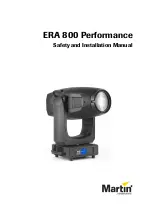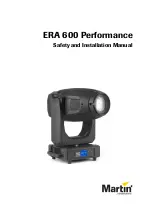
D-2
Plumbing the IntelliStart Fluidics System
Preventing contamination
For information on preventing contamination, refer to
Controlling
Contamination in LC/MS Systems
(part number 715001307). You can find
this document on http://www.waters.com; click Services and Support >
Support.
The selector valve
The selector valve is located on the right-hand side of the instrument, behind
the visor. The letters etched on the front of the valve represent the
components to which the associated port is connected. Etched letters with a
light background indicate inputs, while letters with a dark, etched
background indicate outputs. The following table outlines the component to
which each port connects, and whether the port is a fluid input or output.
Selector valve connections:
Port
Component
Input/Output
P
Infusion pump
Both
A
Sample reservoir A
Input
B
Sample reservoir B
Input
R
Rinse/wash bottle
Input
W
Waste bottle
Output
LC
LC column
Input
S
Xevo TQD ion source
Output
Summary of Contents for Xevo TQD
Page 12: ...xii...
Page 20: ...xx Table of Contents...
Page 23: ...Uses and compatibility 1 3 Xevo TQD TP03406...
Page 24: ...1 4 Specifications and Operating Modes Xevo TQD with visor up TP03407...
Page 42: ...1 22 Specifications and Operating Modes...
Page 52: ...2 10 Preparing for Operation...
Page 76: ...3 24 Changing the Mode of Operation...
Page 194: ...4 118 Maintenance Procedures...
Page 208: ...A 14 Safety Advisories...
Page 234: ...B 26 External Connections...
Page 238: ...C 4 Materials of Construction and Compliant Solvents...
Page 250: ...Index 8...











































